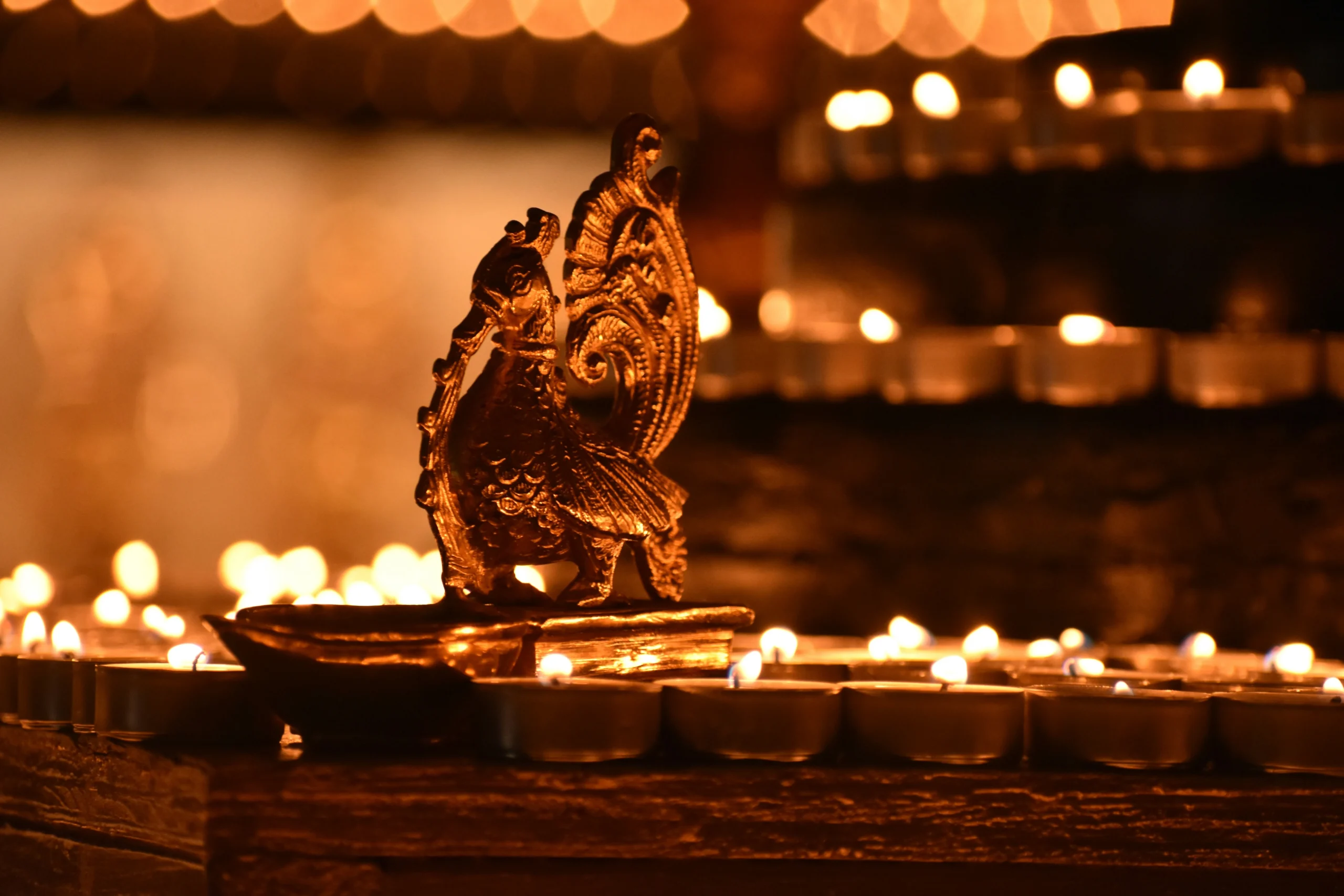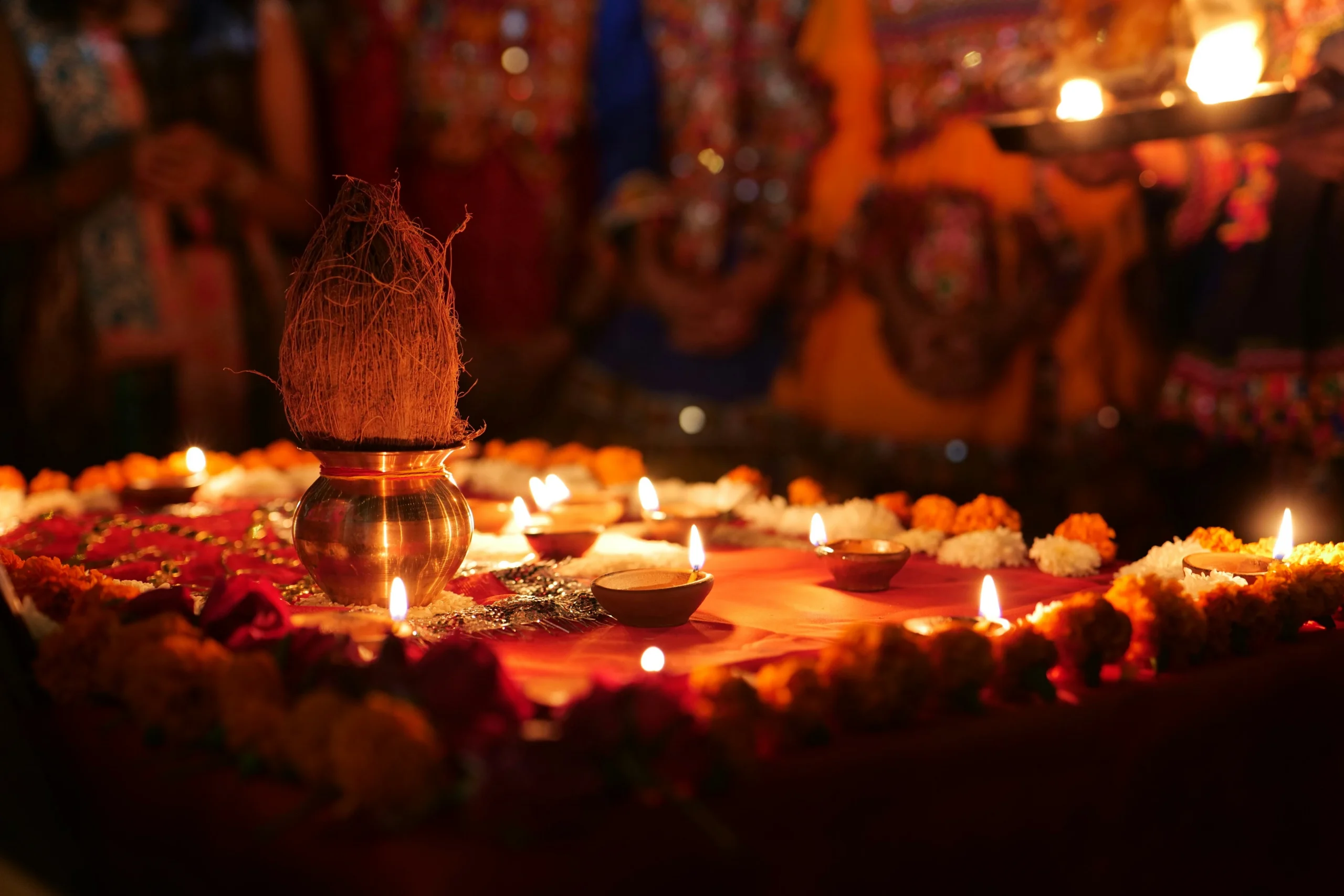

What is Diwali/Deepavali
Diwali, also called Dipavali, is a religious festival celebrated across Hinduism, Jainism, and Sikhism that symbolizes the victory of light over darkness. Observed during the lunar months of Ashvina and Karttika, which usually fall in October or November on the Gregorian calendar, it fills homes with glowing diyas — small earthenware lamps filled with oil. I remember as a child being fascinated by how every lamp shimmered like a tiny sun, guiding Lakshmi, the goddess of wealth, into homes. In North India, families recall Rama’s homecoming to Ayodhya after defeating Ravana, while in Bengal, people worship Kali, and in South India, it honors Krishna’s triumph over Narakasura. For Jains, it marks the spiritual enlightenment of Lord Mahavira, while Sikhs celebrate the release of Guru Hargobind Ji, making Diwali meaningful across faiths. Despite its regional customs, the festival unites people in worship, celebration, and the joy of spiritual homecoming.
History of Diwali/Deepavali
The festival of Deepavali dates back to ancient India, with references in Sanskrit texts like the Padma Purana and Skanda Purana. Rooted in the harvest traditions of the Indian subcontinent, the festival celebrates light as the essence of energy and renewal. Historical accounts mention Emperor Harsha describing Deepavali in his play Nagananda, where dipa means light and pratipada marks the day of illumination. Ancient poets such as Rajasekhara in Kavyamimamsa wrote about Dipamalika, the ritual of lighting oil lamps in whitewashed homes, and decorated streets glowing through the night. Travelers like Al Biruni and Niccolò de’ Conti noted the grandeur of temples, markets, and feasts during Kartik. Even through the Delhi Sultanate and Mughal Empire, rulers like Akbar encouraged these illuminations, making Diwali not just a Hindu calendar event but a cultural utsava of light and harmony. Over centuries, its significance spread globally, and today Diwali is celebrated from London to Singapore, bringing communities together in a shared festive glow.
When Is Diwali Celebrated?
Diwali doesn’t follow a fixed date because it’s based on the Hindu calendar. The festival falls on the new moon (Amavasya) of the month of Kartika, usually between October and November. The expected dates for Diwali are Sunday, 8th November 2026, and Friday, 29th October 2027,marking a period of rituals, feasts, and family gatherings. I love how every home starts its preparation weeks before — cleaning, decorating, and filling the air with the scent of sweets. The celebration feels timeless, perfectly balancing tradition with anticipation.
How Many Days Until Diwali?
As the countdown to Diwali begins, every day, hour, minute, and second brings a growing sense of excitement. Families dive into shopping, travel, and exchanging gifts, while homes fill with festive delicacies. I often keep a bookmark on my favorite festive counter, eagerly watching the timer tick toward the grand celebration. The festival transforms even ordinary routines into joyful preparations, making the festive spirit impossible to ignore.
Why Is Diwali Important?
At its heart, Diwali celebrates the victory of light over darkness and good over evil. The story of Lord Rama returning to Ayodhya after defeating Ravana inspires millions to welcome Goddess Lakshmi into their homes and temples through glowing lamps and colorful rangoli. It’s a time for prosperity, worship, and tradition, where families share sweets, exchange blessings, and light up the sky with fireworks. Personally, lighting that first diya feels like a moment of renewal — a reminder that every shadow fades when faith shines bright.
How is Diwali Celebrated?
During Diwali, Hindus open their windows and doors to invite the goddess Lakshmi, symbolizing wealth and blessings. Every home glows with lamps, and the festival begins with spring-cleaning, wearing new clothes, and sharing gifts. I love watching the streets come alive with sweets, dried fruits, and sparkling lights that mirror everyone’s joy. The fireworks displays fill the sky as families gather to celebrate age-old traditions, rituals, and worship in pure festive spirit. In recent years, many families have shifted toward eco-friendly celebrations, using clay diyas and fewer fireworks to honor the environment while keeping the joy alive.
Diwali Shopping and Festive Preparations
Diwali is not only a time of lights and joy but also a season of festive shopping. People decorate their homes with new clothes, colorful diyas, and traditional sweets. Markets and online stores offer exciting Diwali discounts and festive deals, attracting families to shop for gifts, outfits, and decorations. From gold jewelry to ethnic wear and home décor iteams, every purchase reflects the spirit of renewal and celebration. The cheerful shopping atmosphere adds more excitement to the Diwali countdown, making it one of the most anticipated festive moments of the year.
What can you make for Diwali?
Diwali wouldn’t feel complete without its delicious collection of traditional snacks. From crispy Murukku and Chakli to savory Namak para, fluffy Medu vada, and crunchy Chivda, each bite represents warmth and togetherness. In my kitchen, I love preparing Samosa, Dahi vada, and Aloo bhujia, arranging them into colorful sections that match the festive categories of food and celebration. Whether it’s Nippattu or Sev, these flavors bring people closer, making every Diwali meal a shared memory of taste and joy.
